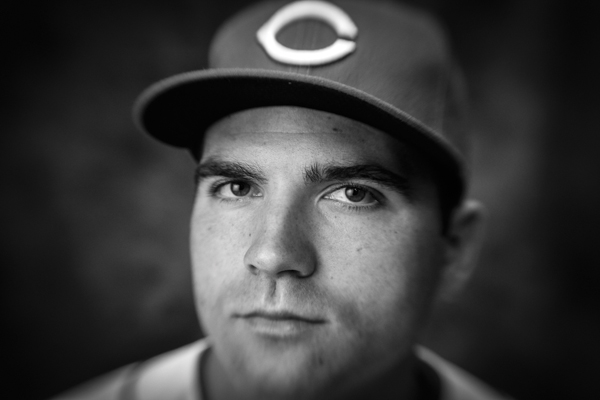Reporters, it has been said, get to write the first draft of history. But history has a way of bending and twisting like a Möbius strip the further it recedes into the past. It isn’t always what it appeared to be in that first flush of recognition. What do photographers get? Something much more immutable, and perhaps more valuable: They get to stop time itself. From 1978 to 2012, Michael Keating’s images wallpapered the pages of The Cincinnati Enquirer, providing a pictorial narrative of the city. Now Clerisy Press has published a hefty collection of his photojournalism called Cincinnati: Shadow & Light. As Greg Hoard, a colleague of Keating’s and a fine drafter of narrative detail, notes in the forward: “Wherever his camera landed, he made photographs that…opened a window on the existence and reality of others. Sometimes his pictures made people laugh. Often they were thought-provoking. Some were beautiful. They were never ordinary.” Here is a small selection of Keating’s unordinary work.

Keating took this shot on September 22, 2002, during the final Cincinnati Reds game held at Riverfront Stadium. On December 12 of that year, the stadium was imploded to make away for Great American Ball Park. Since its opening in 1970, Riverfront Stadium saw the rise of the “Big Red Machine” and was home to such baseball greats as Pete Rose, Joe Morgan, Tony Perez, and Johnny Bench.

The ever-stoic Joey Votto makes a great subject for this photo, shot using a selective focus lens in the style of classic 19th-century baseball photographers.

Part of Keating’s skill is capturing personalities, as with this photo of 14-year-old Dionta Thompson walking in his promotion ceremony from middle school to high school. Thompson dressed for the occasion, showing up in top hat, tails, walking stick, and, most notably, attitude.

For Keating, this photograph represents the trajectory of his career, from being scolded out of a Watergate press conference for not having the requisite credentials to taking this shot of George Washington’s statue in the U.S. Capitol (press pass in hand). “When you start on a riverbank and you wind up on a big hill,” Keating says, “it’s hard not to spill your heart into whatever it is that you do.”

This photo shows years’ worth of press credentials, from the Cincinnati Reds to the Kentucky Derby to national presidential election events. The passes represent not only the breadth of Keating’s career, but also provide their own snapshot of our collective history.

Keating relished the opportunity to photograph sporting events because it gave him a chance to show their wide range of emotion and character. Nowhere is this range more evident than in Keating’s coverage of the Cincinnati Reds. In this photo, umpire Eric Gregg admonishes Tony Perez and an angry Tracy Jones.

Flooding is a part of life in this river city, and thus is a major part of Keating’s career as a photojournalist. Making this photograph gave Keating the chance to use his favorite new perspective: hovering above flood-ravaged Falmouth, Kentucky, in a helicopter. March 1997, Licking River rose 28 feet above flood stage.

Joe Nuxhall and Marty Brennaman were Reds broadcast partners for 31 seasons, starting in 1974. Keating was there to capture this moment between the old friends who’d seen so much Cincinnati history together.

On June 2, 1983, Air Canada flight 797 made an emergency landing at Cincinnati-Northern Kentucky International Airport after a fire broke out on the aircraft. Ninety seconds after the plane landed and the doors were opened, the cabin was engulfed in flames. Twenty-three passengers died. Rather than focus on an image of the entire aircraft, Keating chose a single detail: the charred fuselage, complete with a coroner at work.

Keating spotted the Delta Queen returning to her home port one morning on his way to an assignment for a Mother’s Day story and snapped this photo. “As she approached the Public Landing, the captain sounded the boat’s whistle, releasing steam into the morning air,” he writes.





Facebook Comments